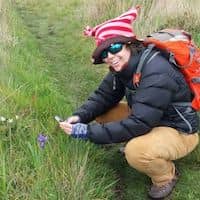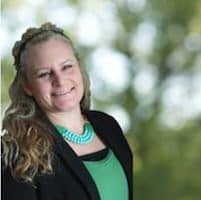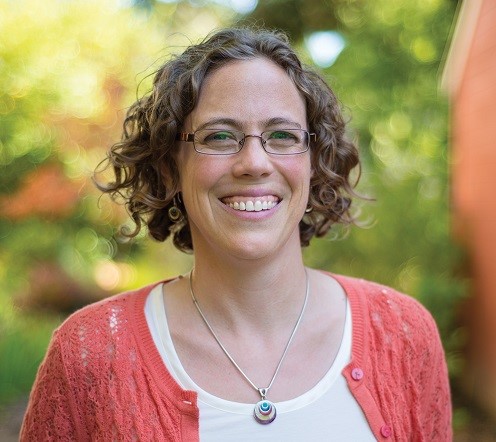• Case Statement • Mission / Terms of Service / FAQ • Registration / Join the Community • NEWS |
• Place Name Search (Help) • Search for Creeks and Rivers • Great Places to View California Native Plants (Help) • EPA Ecoregions in California
• Advanced Search for Plants (Help) • Name Status (synonyms) (Help) • Planting Guide (Help) | |||||||||||||||||||||||||||
|
What is Calflora?
Calflora is 1. a website you can use to learn about plants that grow wild in California (both native plants and weeds); and 2. a nonprofit organization responsible for providing this service. Calflora is run by the team described below. Information in Calflora comes from many sources: the Consortium of California Herbaria, iNaturalist, public agencies, nonprofits, scientists, private donors, and you! (A list of all data sources is available here.) Find Out About a Plant You can enter the common or scientific name of a plant to find out about it. Or, use the name wizard to just enter part of a name and have the wizard make suggestions. The result is an illustrated table of plants that match the name you entered. Click one of the plants in the table to learn the details about that plant — in particular, where it’s been observed in California. Try it out! Find Out What Plant Observations Have Been Made... by a certain person, of a certain plant, in a certain area, or during a certain time period. The application that does this is called Observation Search. The observations that match your criteria are displayed as colored icons on a Google Map. Click on an observation to see photos and other details. Try it out! Find Out What Plants Grow in a Place You can also choose a place and get an illustrated list of the plants that grow there. The application that does this is called Try it out! There’s a lot more to Calflora than these basic tools -- you can learn about Calflora’s more advanced features at the top of this page, where you will find links to many web applications concerning California plants. | ||||||||||||||||||||||||||||
|
• About Observation Data • About Observation Datasets | |||||||||||||||||||||||||||
The Calflora Team
| ||||||||||||||||||||||||||||
|
The Calflora Board
Cynthia Powell. John C. Game, D. Phil., Research Associate, University of California Herbarium at Berkeley; Research Associate and Fellow, National Tropical Botanical Garden, Kauai. Bob Marsh Director of Inveneo: Inveneo delivers the tools of technology to those who need it most in the developing world. John Malpas. Ron Vanderhoff, CNPS Orange Co. Plant Science, affiliations with Cal-IPC, UC Irvine Herbarium. Focus on plant status and distribution, invasive plant EDRR, rare plant conservation. Jutta C. Burger, Ph.D., Science Program Director, California Invasive Plant Council. Julie Kierstead, M.S., retired Shasta-Trinity NF botanist, CNPS certified consulting botanist, affiliations with UCJEPS and California Academy of Sciences; focus on rare plants of NW California, and documenting the flora of the Klamath Ranges. |
||||||||||||||||||||||||||||
|
We ask you to Register
No one is required to pay for access to the data on Calflora. But we do ask you to register -- it helps us measure use and to improve your experience of Calflora. It also helps us when we ask foundations for support. Registering is free. To register, click on LOGIN - REGISTER in the upper right corner of the home page, and fill out the short form. It takes a minute. As a contributor, you can take part in another level of Calflora, which includes contributing observations, commenting on other’s observations, participating in groups, getting help with plant identification, etc. Links to applications specifically for contributors are typically shown in violet: Plant Observation Entry. Once you register, please don’t let anyone else use your account. (When more than one person uses the same account to contribute observations, quality control becomes difficult for everyone involved.) If you need to work closely with other contributors, start a group and invite the others to join it.
Professional Use of Calflora
Organizations and consultants using Calflora for their work pay an annual service fee. This fee is based on the organizations' number of users. Please contact Calflora for more information.
Thank you for Supporting Calflora
Financial contributions you make to Calflora are used for these purposes, amongst others:
Contact us for Support
An important part of the service that Calflora provides is support. We’re eager to answer any questions you have about any part of Calflora. Participate in the Calflora Community We (the Calflora team) rely on a community of interested and engaged users. If you are interested in wild plants in California, you are cordially invited to join this community. For instance, if you are aware of a plant growing wild in some park or other location where it is not yet shown on Calflora, we urge you to register as a contributor and to add an observation of that plant where you know it grows.
Equally important: if you notice information on Calflora
that seems wrong or incomplete, please
Volunteer Opportunities
Volunteers are an important part of the ongoing quality assurance process. If you have the inclination and a little bit of time, we would love to have your help. Here are some particular volunteer jobs:
| ||||||||||||||||||||||||||||
|
Trademarks
Calflora,
What Grows Here?,
Observation Search,
| ||||||||||||||||||||||||||||
|
Civil Rights
In accordance with Federal law and US Department of Agriculture policy, Calflora is prohibited from discriminating on the basis of race, color, national origin, sex, age, or disability. (Not all prohibited bases apply to all programs.)
| ||||||||||||||||||||||||||||








